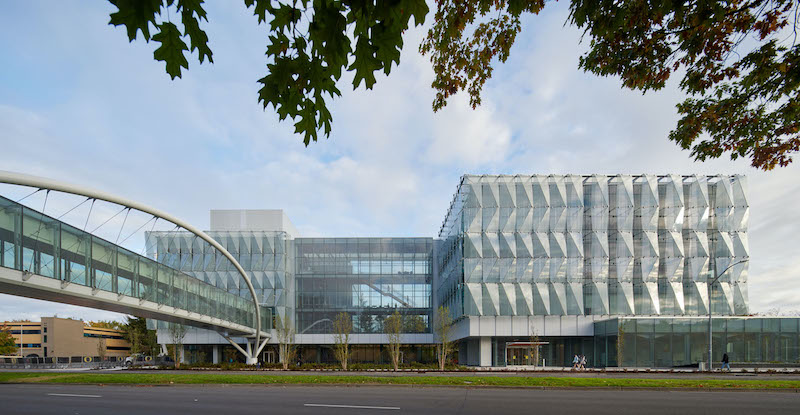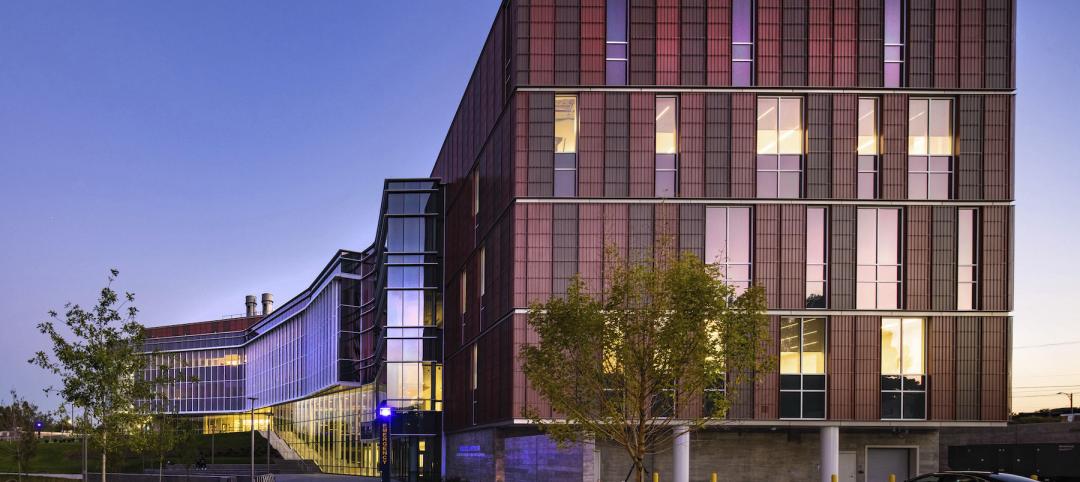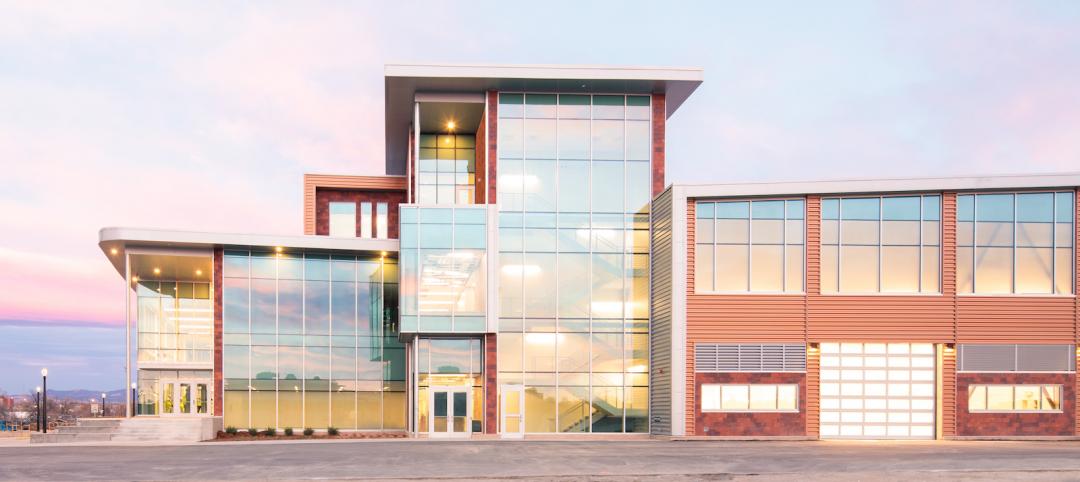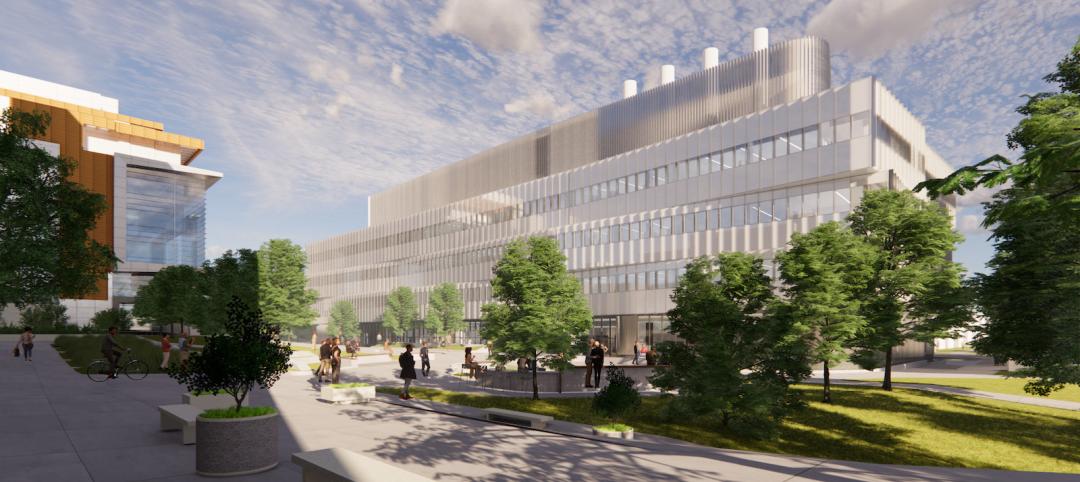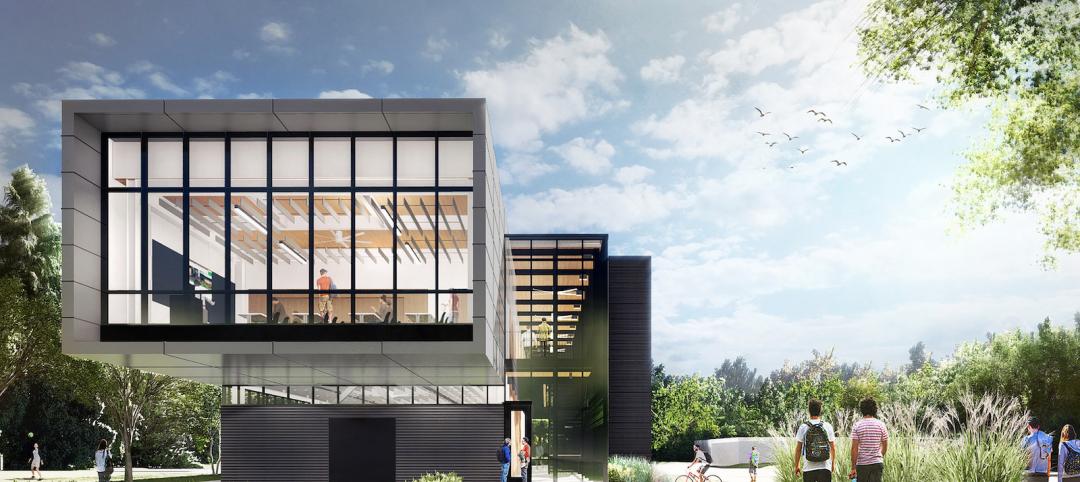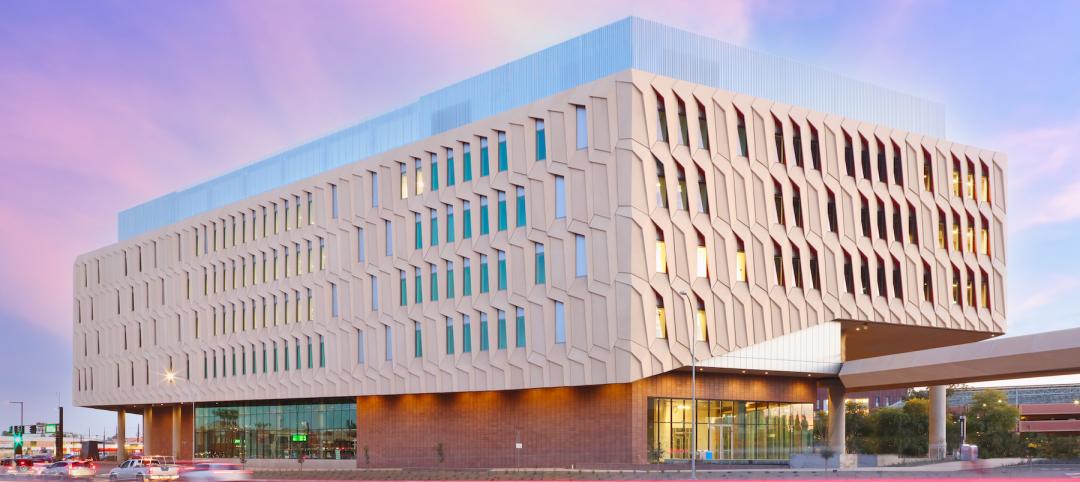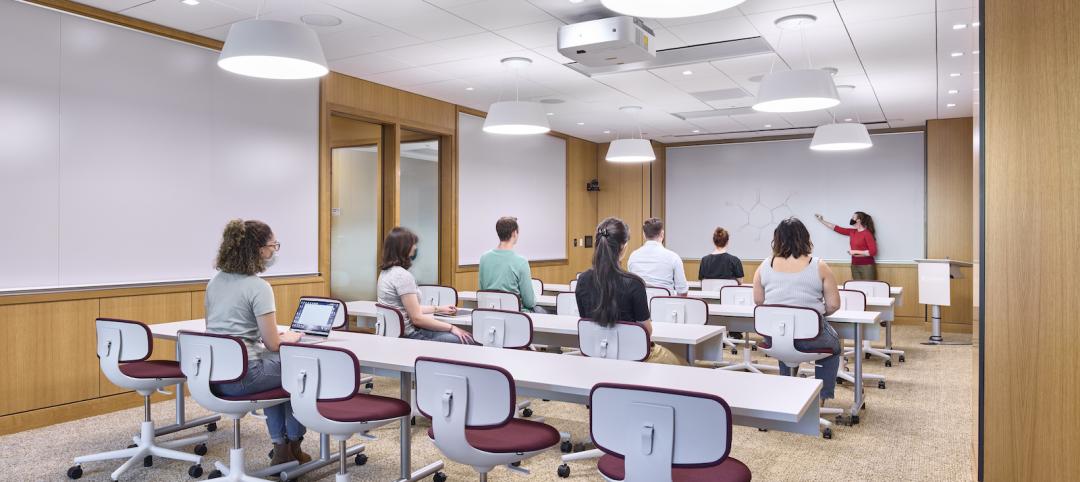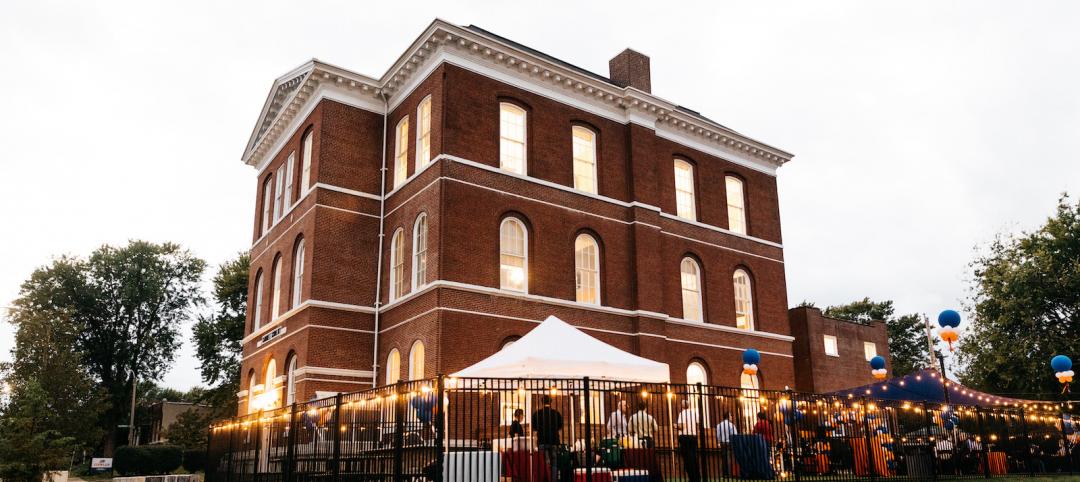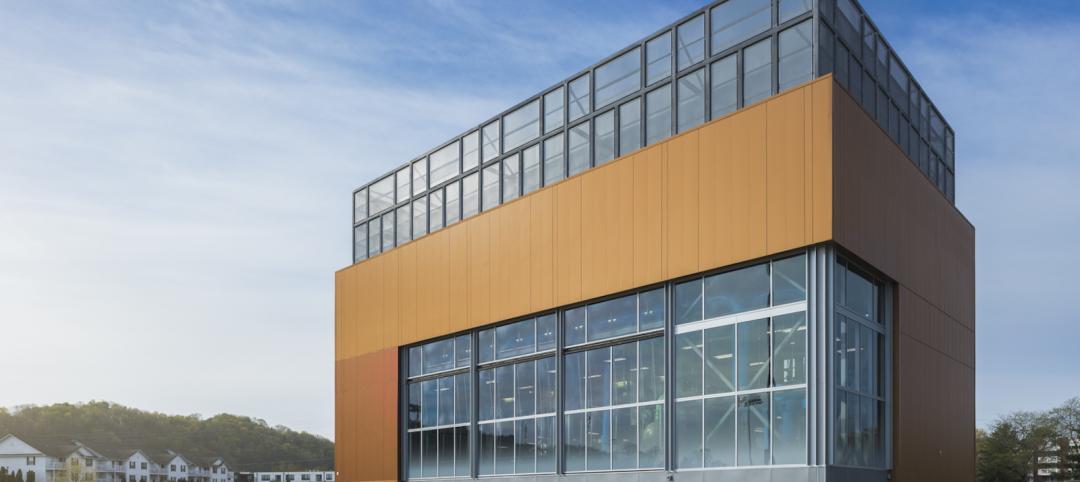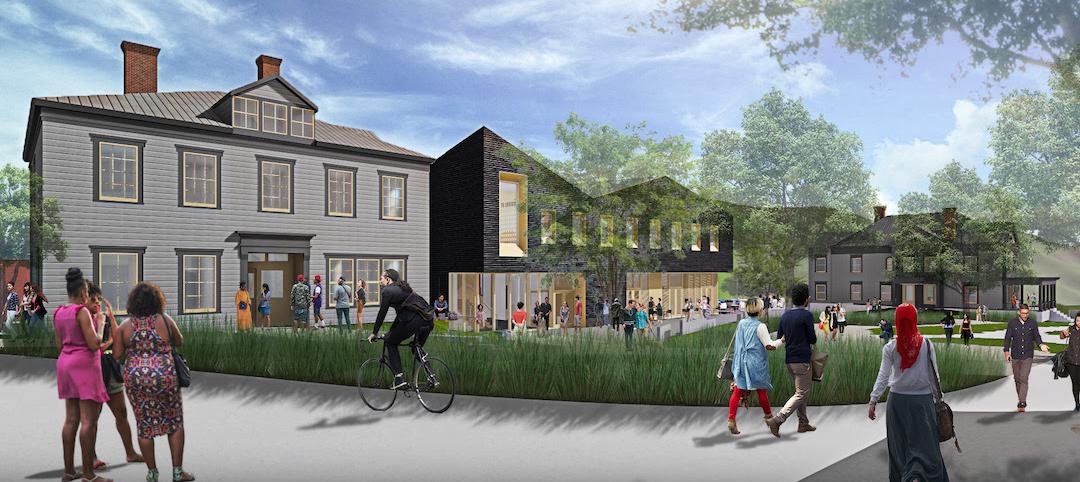Earlier this month, the University of Oregon in Eugene opened the Phil and Penny Knight Campus for Accelerating Scientific Impact. The 160,000-sf complex, which consists of two facing L-shaped towers, supports a mission to shorten the timeline between discovery, development, and deployment by bringing together engineering, applied science, business innovations, and culture. Its environment priorities revolve around wellness, human performance, and community. (The Campus’s tagline is “Science Advancing Society.“)
Phil Knight, co-founder and chairman emeritus of Nike, donated $500 million for this project. “Phil was most interested in the mission” of acceleration, Todd Schliemann, FAIA, Design Partner at Ennead Architects, tells BD+C. The Campus’s current focus is bioengineering, and OU partners with Oregon State University to offer a PhD program in that discipline.
Ennead Architects was this project’s design architect, Portland, Ore.-based Bora Architecture & Interiors was its AOR and designed some of the interiors, and Hoffman Construction built the campus.
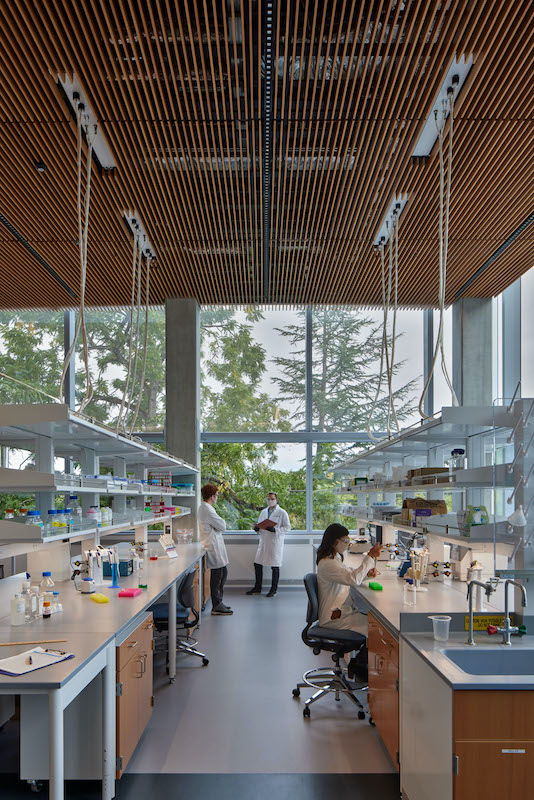
Lab space (above) and work space (below) intersect in the campus's buildings. Mass timber was applied throughout the Campus, including the labs' ceiling.
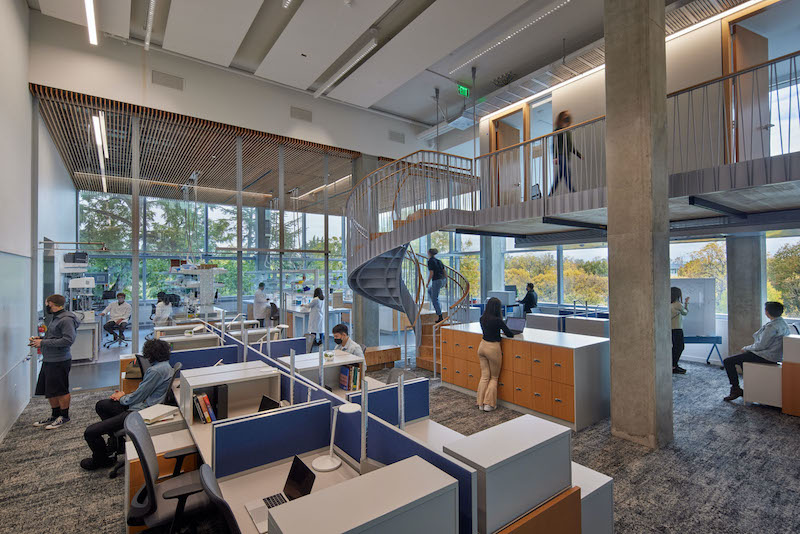
Built on land where a Domino’s Pizza, a mini-mall and parking lot once stood, the Knight Campus is situated between the University of Oregon’s main campus and parkland straddling the Willamette River. A 190-ft-long, 48-ft-wide enclosed bridge, stretching 35 ft above street traffic, connects Knight Campus to Oregon’s existing campus.
Schliemann says the university is positioning the Knight Campus—which he calls a “humanistic research machine”— as a “gateway building” to a possible future research complex.
During the design process, the university hadn’t decided what disciplines these towers would house. So before designing the Knight Campus, representatives from the design team visited several other universities, including MIT’s Media Lab, Harvard, Stanford, and University of California at San Francisco. What they all have in common, says Schliemann, are collaborative spaces where knowledge can be shared. Stanford’s engineering complex, he adds, is noteworthy for how much natural light it lets inside.
‘NEIGHBORHOODS’ BRING RESEARCHERS TOGETHER
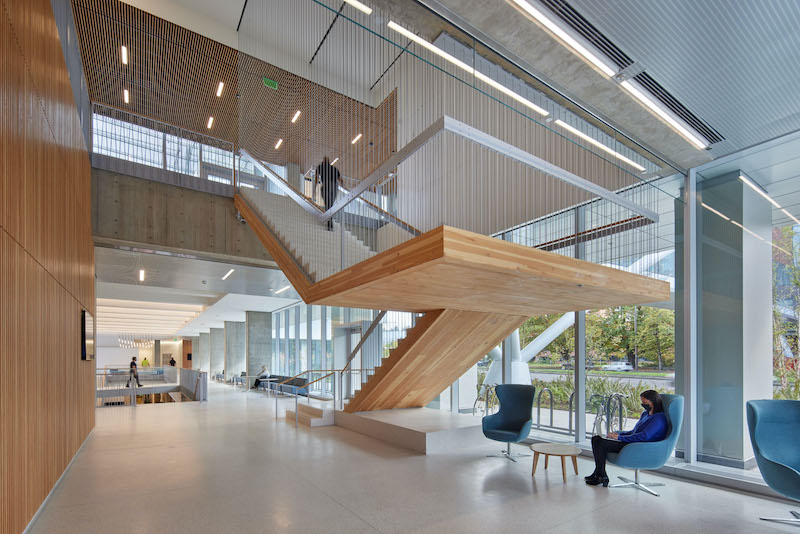
Staircases made from cross-laminated timber connect the floors.
The Knight Campus has several distinguishing characteristics:
•Its two upper floors include four research “neighborhoods” that each has a wet bench area, computational space, and offices where Principal Investigators work. Schliemann contends that this is one of the first lab buildings in the U.S. where PIs are this visible to other research teammates.
•The Campus’s double-skinned façade showcases an outer wall consisting of 650 glass panels and designed to resemble water flowing over rocks. This cascading wall is stabilized by an inner curtainwall made up of 900 glass panels. Schliemann says that this design and materials were chosen to let more natural light and panoramic exterior views into the building (which, he contends, improves working conditions), and for passive energy performance (the inner wall of the façade never gets exceedingly warm).
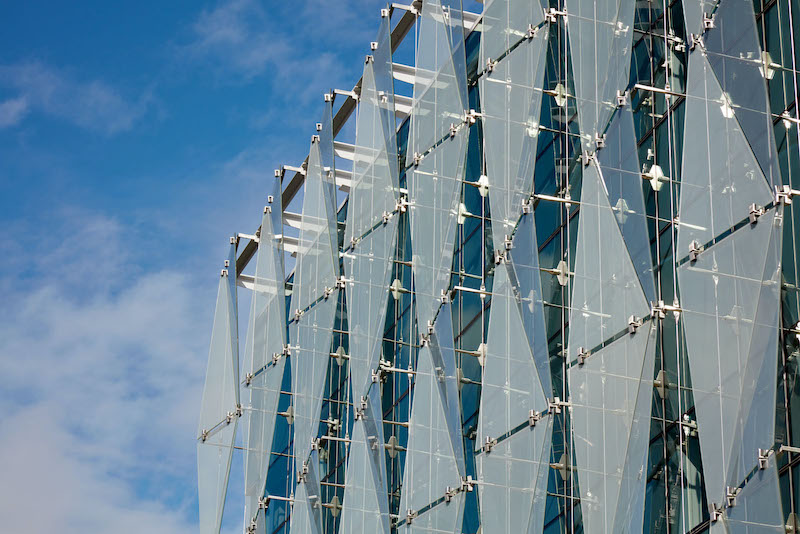
The Campus's double-skinned facade lets more natural light into the buildings and keeps heat from penetrating the inner curtainwall.
The wall structure was light enough to be hung from the roof component.
•Mass timber is prevalent throughout the Knight Campus, whose construction used 20,500 sf of cross-laminated timber that includes 180 CLT panels and 4,000 lbs of wood for each of the building’s staircases. The 21-foot floor-to-floor height allows for suspended mezzanine structures of mass timber containing offices for faculty, creating a new level of connectivity to their labs and graduate students.
Mass timber “is one of the most sustainable ways to construct a building” says Schliemann. (The Knight Campus is targeting LEED Gold certification.) Using mass timber also supports Oregon’s local economy. While vibration prevents a lab space from being made entirely with mass timber, “we could use it for offices, stairs, ceilings and bridges. Plus, we didn’t have to sheetrock the ceilings, as fire codes have finally caught up with mass timber” as a fireproofing agent.
Also see: Researchers use U. of Arkansas buildings as testbed for CLT panels.
SPACES FOR FORMAL OR RELAXED INNOVATION AND INTERACTION
Among the Knight Campus’s amenities are a 6,000-sf Innovation Center and 1,000-sf Wellness Center. While the Innovation Center might seem small when compared to other university research facilities, Schliemann counters that its scale is deceptive. “It gets innovators out into the real world.” He adds that all Knight Campus labs are leasable and tenant-adaptable.
The Wellness Center started out as a locker room with showers. Then spaces for yoga and other exercise regimens were included. Schliemann says the campus has a program where students can take bike rides with researchers.
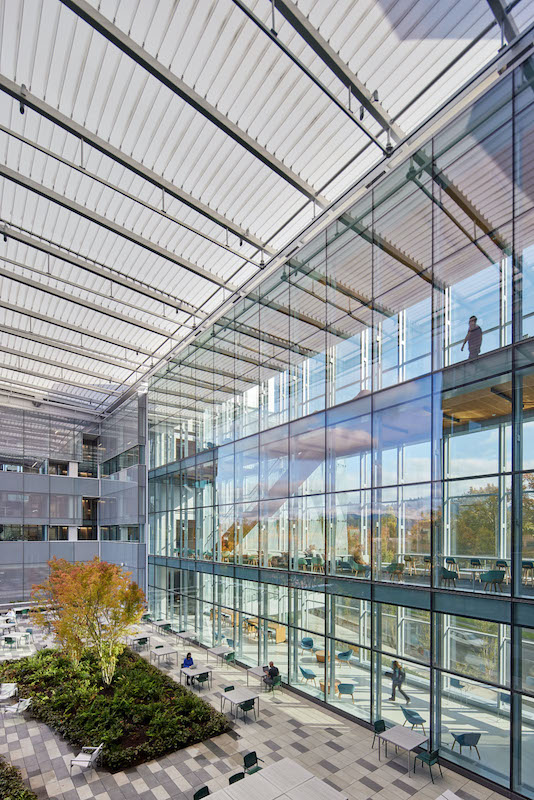
An elevated terrace and courtyard between the Campus's two buildings is covered with a canopy made from ETFE.
Between the Campus’s two buildings is an elevated terrace and courtyard, protected by a transparent plastic canopy, where students and faculty can relax, socialize, and connect with nature, as the terrace overlooks landscaping and the tree-covered Coburg Hills.
Related Stories
Projects | Mar 16, 2022
Tomorrow’s STEM leaders get a state-of-the-art research complex
In February, North Carolina Agriculture and Technical State University (NC A&T) opened its new Engineering Research & Innovation Complex (ERIC).
University Buildings | Mar 7, 2022
A new facility can offer thousands of equine therapy sessions a year
At its new Spur campus in Denver, Colorado State University (CSU) will bring its expertise to the public by offering free educational experiences to visitors of all ages. Spur’s three buildings—Hydro, Terra, and Vida—will focus, respectively, on water, earth, and life.
University Buildings | Mar 4, 2022
The University of Wisconsin-Milwaukee celebrates new chemistry building with groundbreaking
The building will serve as a gateway for all STEM and health science related majors, housing the Department of Chemistry and Biochemistry.
Higher Education | Mar 1, 2022
SRG Partnership designs a nautically inspired space for maritime science
A community college in Oregon has begun construction on a new building devoted to maritime science. With it, the school hopes to solidify its position as a major industrial and marine technology center in the Pacific Northwest.
Education Facilities | Feb 24, 2022
New ASU science and tech building features innovative sustainability elements
Arizona State University’s Interdisciplinary Science and Technology Building 7, completed in December 2021, was constructed with numerous innovative sustainability elements.
University Buildings | Feb 18, 2022
On-campus performing arts centers and museums can be talent magnets for universities
Cultural facilities are changing the way prospective students and parents view higher education campuses.
University Buildings | Feb 18, 2022
UPenn converts a library past its prime to a tech-integrated learning and maker
In September 2021, Penn reopened its renovated and expanded library as an open center for cross-disciplinary learning, prototyping, and collaboration. Now called Biotech Commons, the 17,000-sf building supports new modes of research by offering a range of spaces and services that is free to be scheduled by any student or faculty member.
University Buildings | Feb 17, 2022
A vacated school in St. Louis is turned into a center where suppliers exchange ideas
In 1871, The Carondelet School, designed by Frederick William Raeder, opened to educate more than 400 children of laborers and manufacturers in St. Louis. The building is getting a second lease on life, as it has undergone a $2 million renovation by goBRANDgo!, a marketing firm for the manufacturing and industrial sectors.
University Buildings | Feb 15, 2022
Ohio University's Chilled Water Plant #3 brings high design to a campus utility
Leers Weinzapfel Associates has also designed chiller plants on the campuses of Princeton University, the University of Pennsylvania, Tufts University, the University of Massachusetts Amherst, Harvard University’s Allston Campus, and the Ohio State University.
University Buildings | Feb 14, 2022
Leers Weinzapfel Associates to renovate, expand the Williams College Davis Center
The project will add almost 8,000 sf of space.


